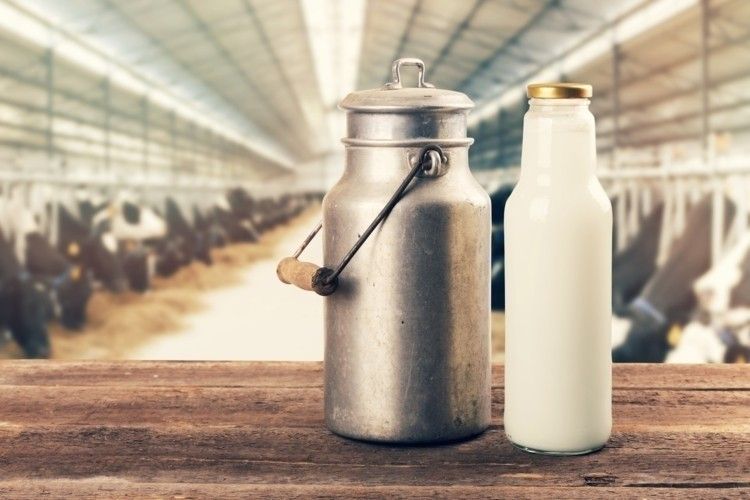
This is approximately a hike of up to 20 percent, which is unprecedented in the recent past. Presently, milk of different qualities has been on sale between Rs80 to Rs175/litre in the country. The price bracket of milk has also not so much stretched before as it generally remains between Rs60 and Rs140 within a year or so.
With the latest jacking up of prices by dairy industry and producers, the pasteurised milk became dearer and was currently hovering around Rs120 and Rs175/litre, loose milk Rs80 and Rs120 and Ultra-High-Temperature (UHT) or packaged milk was being sold at Rs145 to Rs155/litre. In sheer contrast, the farmgate prices stand at Rs70-82 per litre.
Muhammad Amir, a dairy expert from Okara District, said there had been a sharp upsurge in the milk price due to lack of milk powder imports, terming it one of the major reasons behind shortage of liquid milk as well as its spiraling prices.
“Milk was being imported from formal and informal routes; however, these are now shut due to peculiar geopolitics in the region, leaving milk industry high and dry.”
Even those small-scale processors that used dry milk for enhancing volume of fresh milk through adulteration were facing immense shortfall of raw material, Amir said.
“Now, the full-fat farmgate milk price in rural areas has hit Rs78/litre compared to last year’s Rs60-65/litre,” he said adding, “Similarly, raw cow milk in villages is being sold at Rs100-110/litre, while premium quality buffalo milk reached Rs125-140/litre”. He warned that if this trend continued, the milk prices would go as high as Rs140-150/litre in villages and towns by end of next year.
In addition to gaps in milk supply due to seasonal variation in production and shortage of fodder, Dr Waseem Shaukat, an industry expert, said another major issue behind higher consumer milk prices was involvement of middlemen and inter-chain players between the producer and the consumer. “Hence, there is a substantial difference between consumer and farmgate price.
Secondly, he added, the cost of production per litre of milk was also substantially higher in Pakistan. According to the IFCN Dairy Report 2019, Pakistan had a 12 percent higher farmgate milk price compared to the world while at the same time Pakistan had 40 percent higher feed prices compared to the world.
“Now you can imagine what the farmer is actually losing by spending 40 percent higher on feed and getting only 12 percent higher price on milk in comparison to the world.”
He said one of the major reasons for being so expensive in terms of feed prices was that the country continued to be import-dependent in terms of a major feed ingredient, from soybean to canola, and from vitamins and premixed to bypass fat and from calf milk replacer to all major nutritional products. “Also, there is a substantial amount of duties and taxes applicable on the import of these feed ingredients that adds up in the feed cost ultimately.”
He demanded the government must take appropriate action to lower the feed cost by removing the unnecessary taxation and tariff on the ingredients. Dr Waseem also blamed shortage of fodder and seasonal variations as major reasons behind imbalanced milk demand and held supply of milk responsible for pushing prices to next level.
“The gaps in milk demand and supply do not exist in totality when we talk about a typical demand and supply gap in Pakistan. The problem is that the milk demand and milk supply are not synced with each other throughout the year. This causes abundance at one point and shortage at the other within a year,” he observed.
“For example, milk supply is higher in the winter season compared to summer as the milk production cycle is winter-oriented in Pakistan, mainly because of two main reasons; firstly, physiological cycle of the lactation is set at a pattern that majority of animals’ lactation commences between August and November and ends between March and June. Hence the peak milk production is generally between November and March,” Dr Waseem said.
The summer season brings substantial fodder shortage in the country plus heat stress causes a significant drop in the milk production for the animals that are still in lactation and not dried off yet, according to Dr Waseem.
As a result, milk production remained suppressed from April till September naturally, he added.
“Similarly, with high ambient temperature, milk handling in the summer season becomes more challenging and milk wastage also becomes more prominent leading to a substantial decrease in milk supply in the market,” he said.
Therefore, Dr Waseem, who is presently a Research Partner at the International Farm Comparison Network (IFCN), and Doctoral Researcher at the University of Calgary, Canada added, “We generally see that the milk demand surpasses supply only in the summer season and not in the winter season”. “Now, this calls for either increasing the supply side to meet the summer demand or else the market will be exploited through adulteration and black marketing as it currently is,” he said.
Dr Muhammad Junaid from University of Veterinary & Animal Sciences (UVAS) said loose milk prices had now increased and ranged between Rs100-120 in Punjab and up to 135 in Sindh.
“Recent surge in prices is the part of inflation, which is mainly due to increased feed prices. UHT prices are towards higher side and need to be rationalised.”
The ultimate future of milk supply chain in the country was of pasturised milk, he observed. “This only can be achieved through massive awareness and strong quality control by government. This ends up with pull pressure technology which is pivotal for the development of good milk supply chains. Competition between lose milk and value-added is not a fair solution as it doesn’t have equal competitive environment,” Junaid stressed.
























